Roll over image to zoom in
Comparative Religion For Dummies
£16.10
Understand the beliefs, customs, and rituals of each faith
The fun and easy way to know the common elements of these widespread religions
Want to know more about the faiths of Judaism, Christianity, and Islam? This plain-English guide traces their evolution from their commonorigin – Abraham – and explains their different, yet linked, beliefs.You’ll see how each religion developed, endured setbacks, and became a fixture in modern society – and you’ll learn how members havedeveloped similar approaches to worship.
Discover:
- How the belief in one God originated
- The roots of Abraham’s family tree
- The sacred texts of each faith
- Major similarities and differences
- How these religions influenced the world
Read more
Additional information
| Publisher | 1st edition (14 April 2008), For Dummies |
|---|---|
| Language | English |
| Paperback | 386 pages |
| ISBN-10 | 9780470230657 |
| ISBN-13 | 978-0470230657 |
| Dimensions | 18.03 x 2.29 x 22.86 cm |

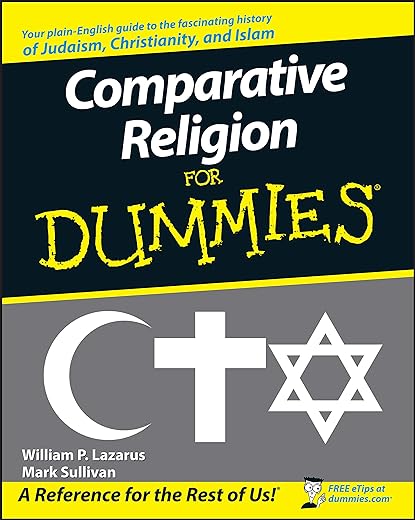
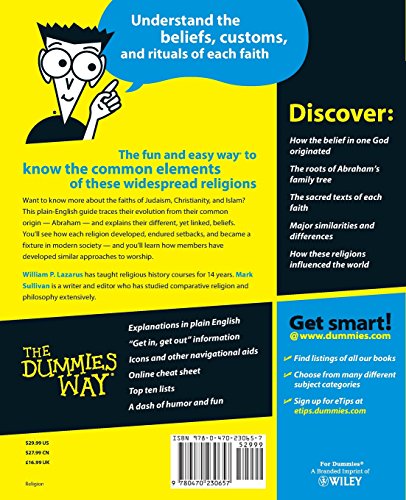
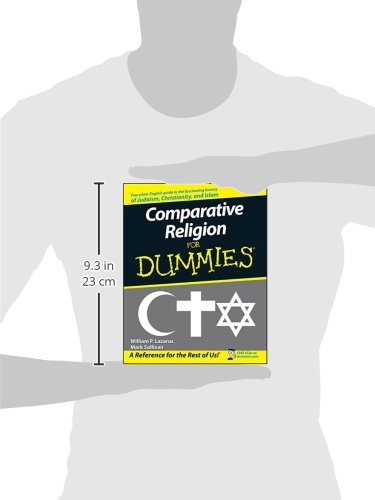
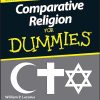




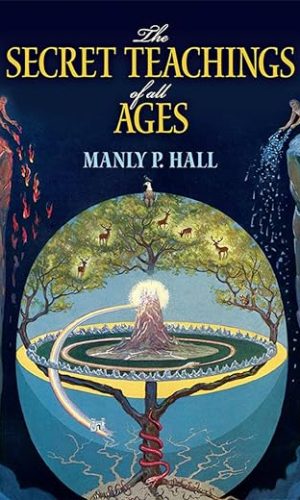
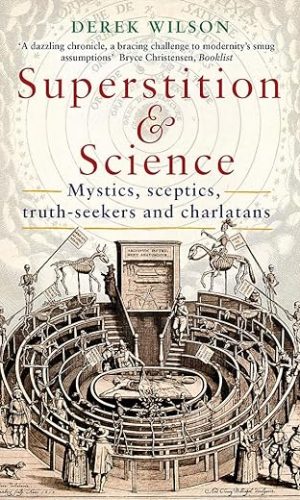

by Amazon Customer
I didnt order it!
by Egypt1am
Great book off business, pleasure or study. Nice quality paper and print size. Well worth the money. Buy it now
by Abdul Malik Collins
Very good and clear….even this Muslim likes it hihihi
by Mr A P Masterman
Admittedly this is a book for dummies trying to cover a significant amount of complex theology but it really is lightweight and littered with errors. Reading it from a Christian perspective trying to understand how the three Abrahamic faiths fit together, I got the sense that the authors never really understood the New Testament and its relationship with the Old. Specifically it failed to explain covenant theology and Jesus’ claim to be establishing a new covenant between God and mankind (as opposed to God and the Jews). This is critical to understanding the essentially antagonistic relationship between Christianity and Judaism. It also rather uncritically seems to accept the idea that Paul (who was not the author of Hebrews as claimed here) turned Jesus into a Messianic figure rather than Jesus claiming and acting as the Messiah (forgiving sins). I read this to learn more about Islam but I got the sense that again the authors’ knowledge was sketchy. Whilst the 5 pillars were covered, there was little critical analysis of how they were employed in practice. The difference betweenthe hijab and niqab is increasingly politically important (the hijab can be worn in court, the niqab can’t) but the book mixes them up. Overall it appears to be written with an underlying thesis that the 3 Abrahamic faiths are all derived out of the same Mesopotamian myths and all added their own flavours but essentially all believe the same things about there being one God, sin, judgement and life after death. The essential problem with this analysis, such as it is, is that it doesn’t appreciate that the differences (be it a chosen people, redemption through the death and resurrection of God’s son, or the unique revelation of Allah to the prophet) mean that those similarities are rendered largely irrelevant by the core beliefs of each faith. If you’re coming to the subject with little understanding of the faiths, it’s okay but its conclusions are questionable. If you want something more critical and properly researched, look elsewhere.
by Carmine
Great book.
For beginners trying to understand west religions and for religious people who are trying to understand the past and the basis of their religion.
Very good information, easy to read.